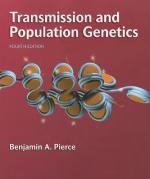|
This section contains 1,283 words (approx. 5 pages at 300 words per page) |

|
Population genetics is the study of the genetic structure of populations, the frequencies of alleles and genotypes. A population is a local group of organisms of the same species that normally interbreed. Defining the limits of a population can be somewhat arbitrary if neighboring populations regularly interbreed. All the humans in a small town in the rural United States could be defined as a population, but what about the humans in a suburb of Los Angeles? They can interbreed directly with nearby populations, and, indirectly, with populations extending continuously north and south for a hundred or more miles. In addition, a large human population often consists of subpopulations that do not readily interbreed because of differences in education, income, and ethnicity. Despite these complexities, one can make some simple definitions.
Gene Pool and Genetic Structure
All of the alleles shared by all of the individuals in...
|
This section contains 1,283 words (approx. 5 pages at 300 words per page) |

|


